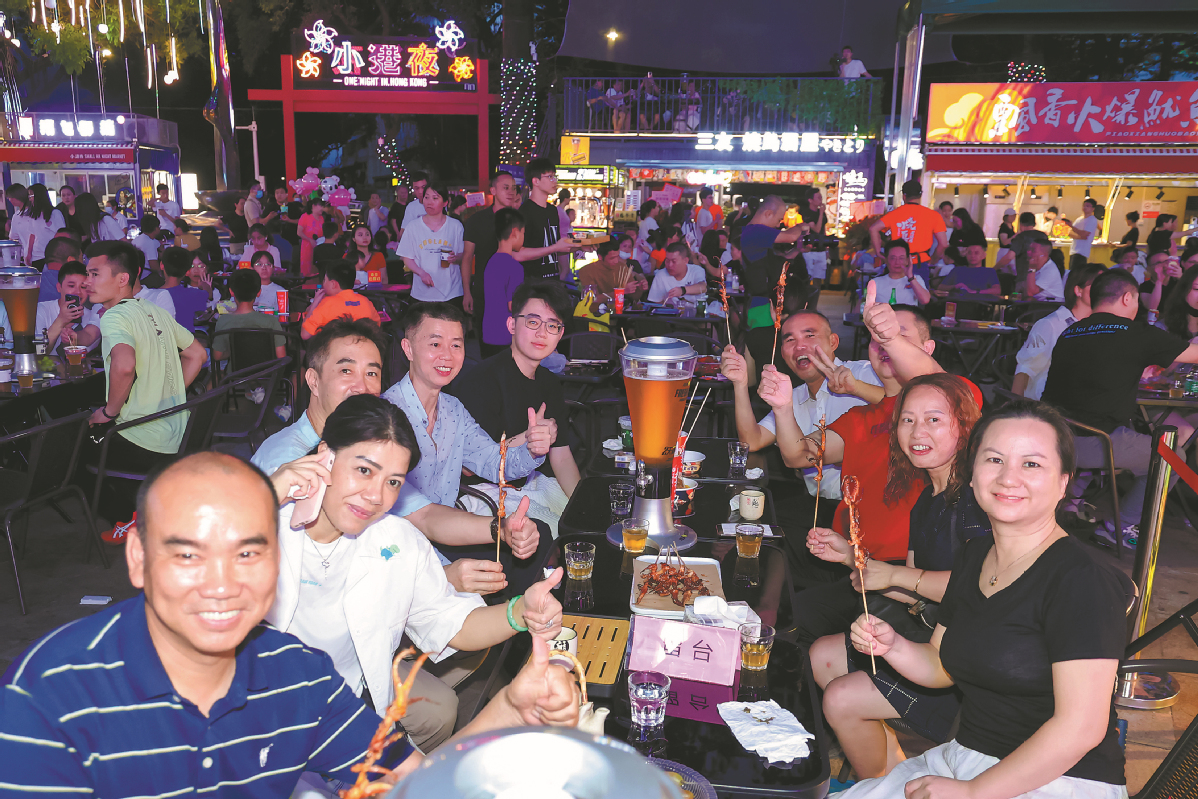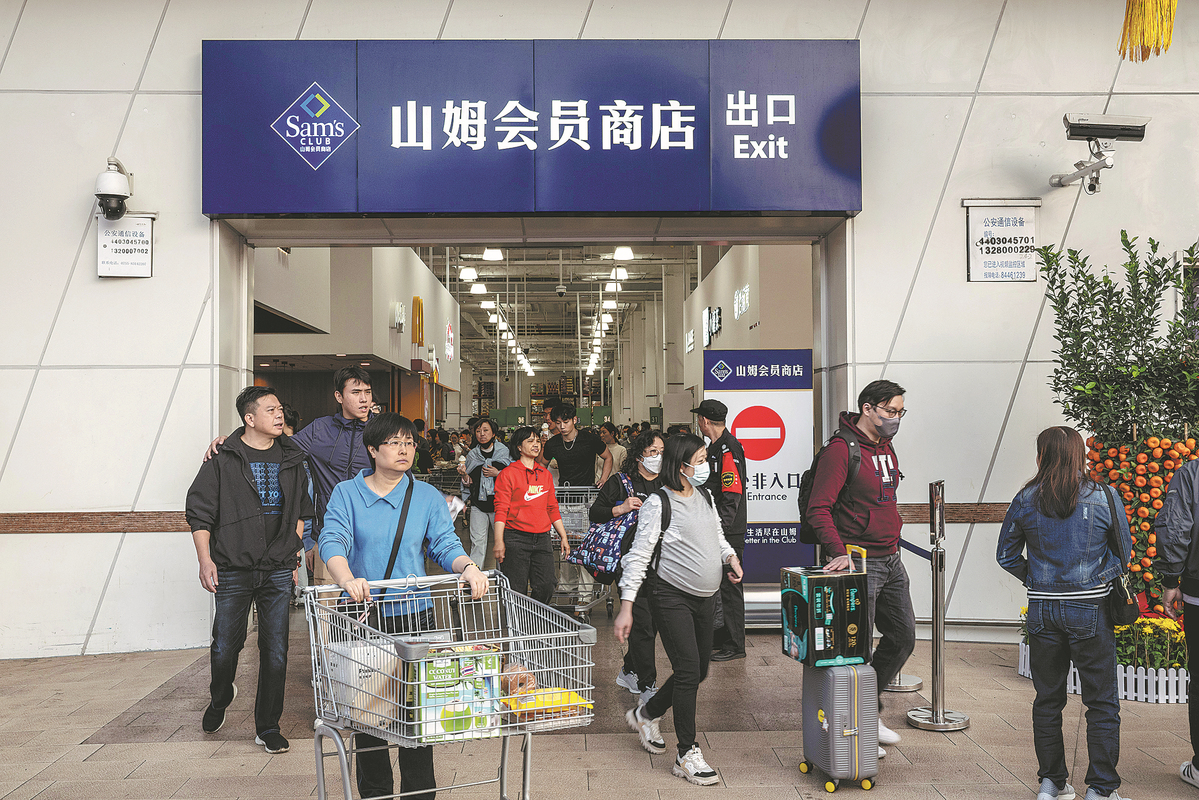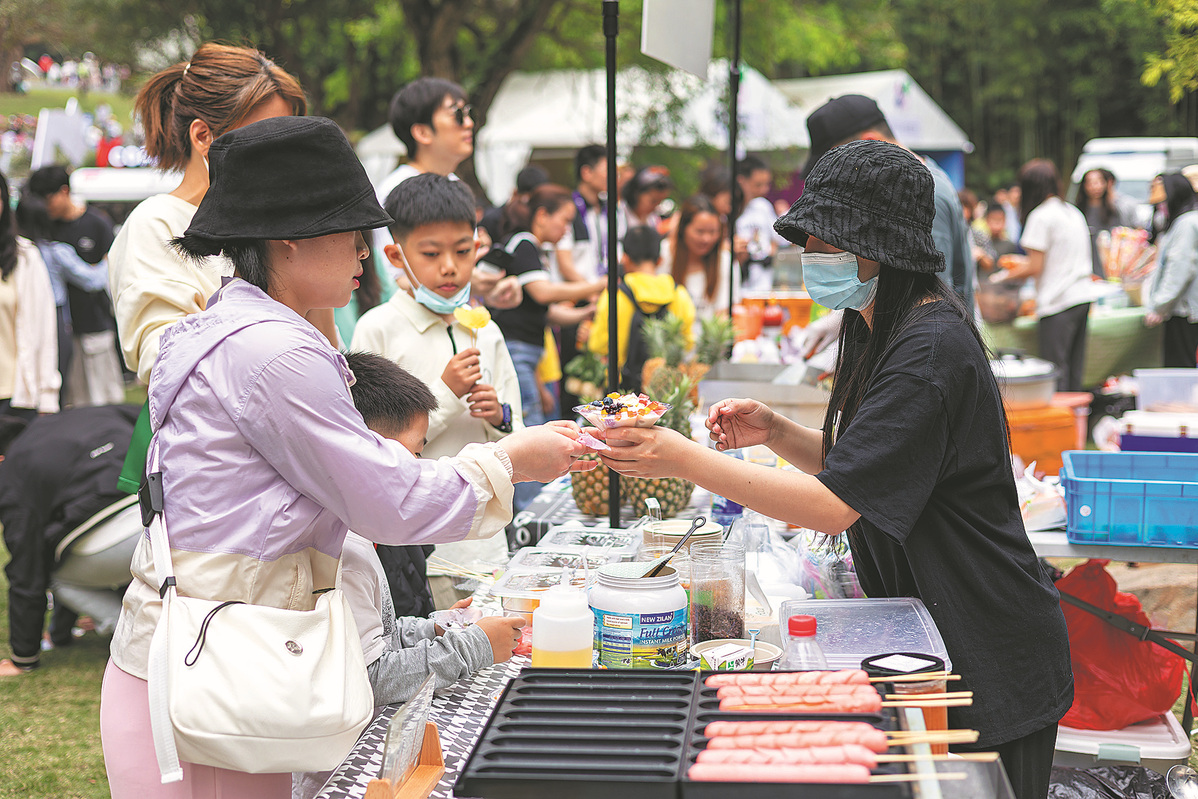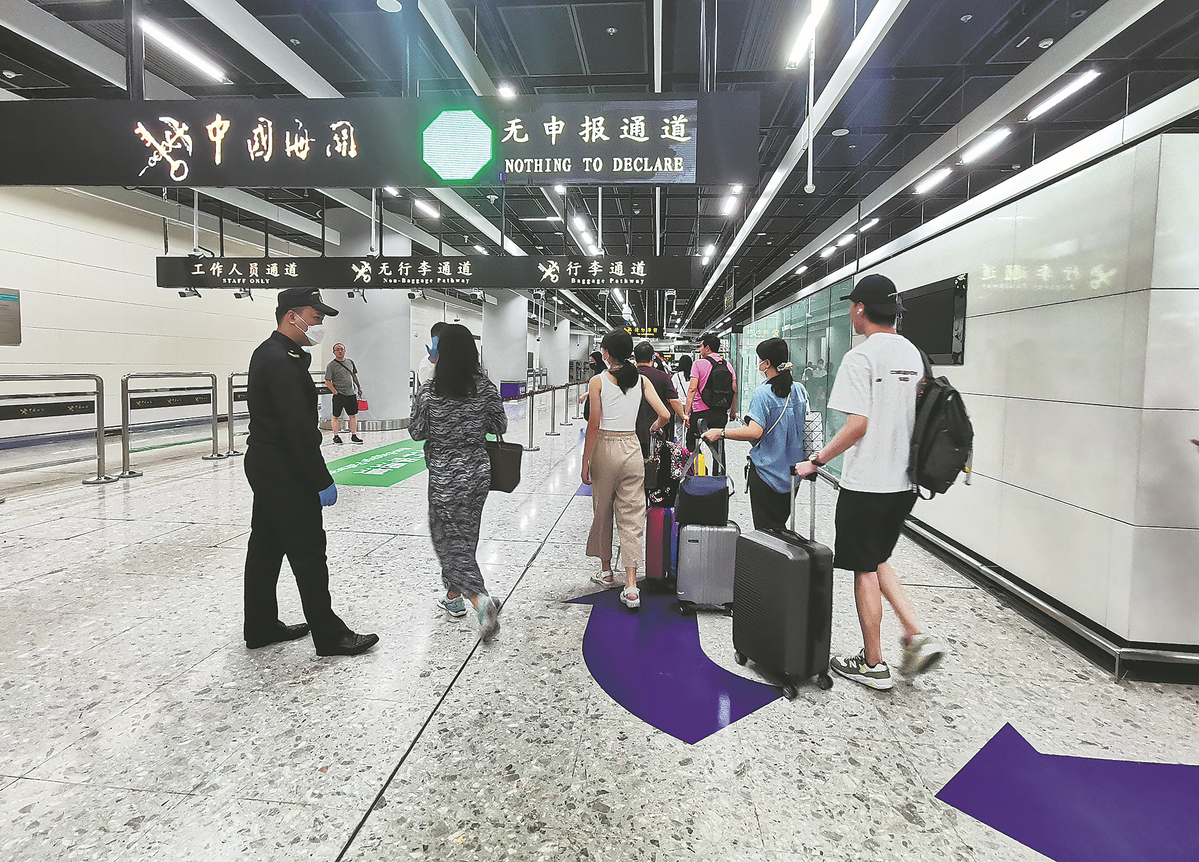HK shoppers flocking north for bargains, fun and food
CHINA DAILY2024-04-09 13:11
Easier access, improved transportation driving post-pandemic wave of visitors

Customers take photos while dining at the night market in Yantian, Shenzhen, Guangdong province, on July 8.XINHUA
Bianca Lau travels from Hong Kong to Shenzhen in neighboring Guangdong province every two weeks, which she says has become a "fixed schedule" in her life.
She normally goes with two friends, has lunch at a restaurant in downtown Futian district, buys some food and daily necessities from a supermarket, and enjoys a leisurely afternoon tea before heading back to Hong Kong in the evening.
"I don't feel that I am traveling to another city. It only takes about an hour to get to Shenzhen," said Lau, who lives in Sha Tin, in Hong Kong's New Territories. A rich variety of products, reasonable prices and a different shopping experience are the biggest draws for the 36-year-old legal worker to "head north".
"Better cross-boundary transport and payment have also made the trip more pleasant," she said.
Since the full resumption of normal travel between Hong Kong and the Chinese mainland early last year, there has been a growing number of Hong Kong residents flocking to Shenzhen to dine, shop and enjoy the entertainment on offer. According to Hong Kong's Immigration Department, the city's residents made more than 53 million trips to the Chinese mainland last year.

Shoppers outside a membership Sam's Club store in Shenzhen, on Feb 13.GILLES SABRIE/BLOOMBERG/GETTY IMAGES
Value for money
The ongoing wave reflects how integration between Hong Kong and Shenzhen is gathering pace, boosted by policy support and improved infrastructure. The appreciation of the Hong Kong dollar against the renminbi over the past year has also boosted Hong Kong residents' spending power on the mainland.
"Many Hong Kong residents hadn't been to the Chinese mainland for years due to the pandemic. So now they are flocking to Shenzhen for 'revenge shopping' to make up for the time lost," said Chong Tai-leung, associate professor at the Chinese University of Hong Kong's Department of Economics.
"It's no longer confined to just one or two people going to Shenzhen each weekend. Whole families are going there together. This structural shift will continue to gain momentum," he said.
Travel has become easy and convenient as the cross-border transportation network has improved greatly in recent years, with the "one-hour living circle" taking shape in the Guangdong-Hong Kong-Macao Greater Bay Area.
The Northbound Travel for Hong Kong Vehicles program, which came into effect last July, also enables eligible Hong Kong private cars to travel to Guangdong via the Hong Kong-Zhuhai-Macao Bridge. Official statistics show that as of March 9, more than 500,000 cross-border trips had been made. The figure for February alone reached over 100,000.
Businesses in Shenzhen are adjusting their strategies and stepping up marketing campaigns to seize the opportunities arising from the influx of Hong Kong residents.
"The most significant trend is that the proportion of catering outlets — especially those in the Chinese specialty cuisine and new-style tea drinks subsectors — in a mall's tenant mix, has increased significantly to meet the growing dining demand from Hong Kong consumers," said Zhang Xiaoduan, deputy dean of Cushman & Wakefield Research Institute.
"This is particularly noticeable in midrange malls near the checkpoints and transit hubs, such as Link CentralWalk and Wongtee Plaza (Futian district)."
The expansion of direct warehouse shopping and grocery chains like Sam's Club, Hema and Costco in Shenzhen has also accelerated, partly to better satisfy the "buy-in-bulk "needs of Hong Kong consumers who travel north to shop every one or two weeks, Zhang said.
Chen Wenhui, retail head of advisory and transaction services at CBRE Southern China, said Hong Kong consumers mainly get information on the Shenzhen retail market from social media platforms like Xiaohongshu.
"The consumption boom has enabled Shenzhen merchants to understand the consumption characteristics of Hong Kong residents, which will boost the confidence of mainland brands in opening up new stores in the SAR," said Chen.
The closer interaction between the two cities, both online and offline, also allows Hong Kong consumers to gain a deeper understanding of the mainland's economic and cultural environment, helping Hong Kong better integrate into the country's overall development, he added.

People buy food at the Greater Bay Area Flower Show in Shenzhen on April 8. [Photo for China Daily]
Trendy travel
According to a survey conducted in February by the Hong Kong Research Association, 25 percent of respondents said they spent on average 1,000 yuan ($141) or more every day when they visited the Chinese mainland in the past year.
While 33 percent said they would reduce spending in Hong Kong as a result, 34 percent said they would not, said the survey, which was based on interviews with 1,007 city residents aged 18 or above.
A Hong Kong media professional surnamed Mok said he spends two or three days in Shenzhen every month for social gatherings and to enjoy gaming.
"I went there for indoor go-karting with a friend at a shopping mall in Longgang district last week," Mok said.
"It cost 256 yuan for unlimited access for the whole day to all the facilities in the sprawling play area, including go-cart racing, bowling and ice-skating. In Hong Kong, a similar go-kart experience would cost about HK$210($26.80) for only eight minutes."
While "heading north" for shopping and recreation has become trendy, the reverse is also happening, official statistics show. Mainland visitors accounted for nearly 80 percent of Hong Kong's inbound tourists last year, according to data from the Hong Kong Tourism Board.
Of around 34 million visitors to the city in 2023, approximately 26.5 million were from the mainland.
On the business side, more than 40 catering enterprises from the Chinese mainland had completed or were having trademark registration processed in Hong Kong last year.
Industry insiders and experts said that Hong Kong should introduce more favorable travel measures, upgrade its tourist attractions and develop its cultural identity to woo more mainland tourists.
Hong Kong, famed as a shopping paradise, has lived off its past for a long time, said Edward Lau Kwokfan, a member of Hong Kong's Legislative Council.
The city should rethink how to consolidate its policy, position and resources advantages, and explore setting up more tourist hot spots to offer different experiences to visitors, he said.

Hong Kong tourists enter the West Kowloon Station to take a high-speed train to the mainland.WANG FENG/XINHUA
Mainland tourists
During this year's two sessions — the annual meetings of the National People's Congress, the country's top legislature, and the Chinese People's Political Consultative Conference National Committee, the country's top political advisory body — improving Hong Kong's tourism industry featured in discussions.
National legislators and political advisers from Hong Kong focused on how to attract more mainland tourists to the city with some calling for an increase in the duty-free shopping limit and an expansion of multiple-entry visas for mainland visitors.
The duty-free shopping limit for mainland tourists visiting Hong Kong currently stands at 5,000 yuan.
Henry Tang Ying-yen, a member of the Standing Committee of the CPPCC National Committee, said he hoped the cap could be raised to 30,000 yuan, saying this would boost the Hong Kong tourism industry and drive growth in other sectors including catering, hospitality and retail.
The multiple-entry visa program for Shenzhen residents should also be restored and extended to other cities in the Greater Bay Area, he said.
Dennis Lam Shun-chiu, a Hong Kong deputy to the NPC, urged greater efforts be made to stimulate spending in Hong Kong by mainland residents.
Shopping expenditure of mainland visitors to Hong Kong hit a record HK$89.5 billion in the first half of 2014. However, it dropped to HK$24.5 billion in the same period of 2023, down over 70 percent.
Lam believes that extending the operating hours of Shenzhen-Hong Kong checkpoints and improving customs clearance efficiency will provide more convenience for travelers and increase their willingness to visit Hong Kong.
The operating hours of Futian and Luohu checkpoints could be extended to midnight, and to 3 am on weekends and holidays, he said. Lam also suggested that Shenzhen Bay and Liantang checkpoints operate 24 hours a day, and for this arrangement to be gradually expanded to other checkpoints. At the moment, Huanggang checkpoint is the only land crossing between Shenzhen and Hong Kong that is open 24 hours a day.
Cultural identity
Allan Zeman, dubbed the "King of Lan Kwai Fong" — the city's famed nightlife district — said Hong Kong needs to nurture a unique cultural identity to draw tourists. Mainland visitors are no longer as enthralled by Hong Kong shopping malls as they were in the past, Zeman said. "Any type of shopping mall we see in Hong Kong can also be seen in every city on the mainland," he said.
Zeman said Lan Kwai Fong's success had been partly driven by the influx of young mainland tourists keen to "experience something different", be it flipping through English-language menus and viewing the "exotic" cuisine or trying to pronounce the names of cocktails. "Mainland tourists spent much more before the pandemic," he added.
Hong Kong tourism could benefit from organizing more "world-class "night bazaars, he said.
"Inspired by the likes of Singapore and Taiwan, let's ensure we do it with the utmost excellence. Our goal should be to create an impactful experience, setting it apart from ordinary markets," Zeman said.
Restaurants should offer customers more alfresco dining options, he said, adding this is a crucial element that contributes to a city's cultural atmosphere.
From a global perspective, collaboration with other cities in the GBA is essential for Hong Kong to develop into an international tourism hub, by giving full play to the comparative strengths of each metropolis in the 11-city cluster.
The city's acting secretary for Culture, Sports and Tourism, Raistlin Lau, said the Hong Kong Tourism Board will continue to strengthen cooperation with Macao and other GBA cities to participate in overseas promotions.
It will also collaborate to "develop and promote multi-destination themed itineraries and tourism products that cater for the different interests and preferences of visitors with a view to attracting more overseas visitors to Hong Kong", he added.
